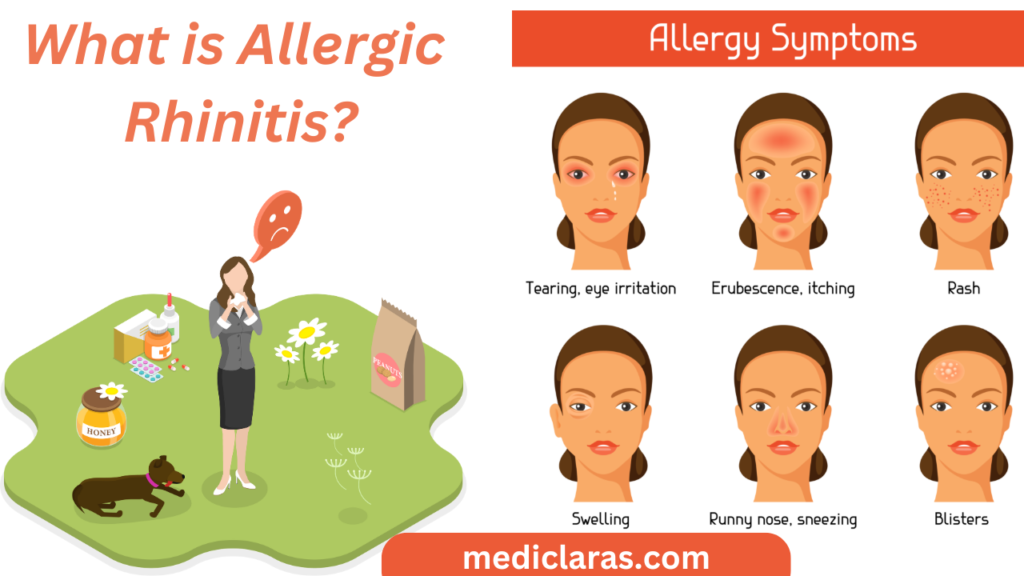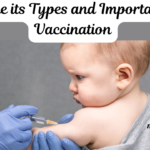What is Allergic Rhinitis, Its Symptoms and Treatment
Allergy rhinitis is a form of allergic condition of the nasal membrane triggered by the exposure to certain allergen smart particles in the air. Histamine is a naturally occurring substance that your body releases in response to allergens that you inhale through your mouth or nose. Although it is referred to as hay fever most people do not experience a fever from hay. Here we explain What is Allergic Rhinitis ,its symptoms and treatment.
What is Allergic Rhinitis
Allergic Rhinitis is a collection of symptoms that impact the nose .when the body immune system detects and overreacts to an environmental factor that normally poses no issues for most people ,allergy rhinitis develops.
The types of Allergic Rhinitis are:
● Seasonal: spring summer and early fall are when seasonal allergic rhinitis symptoms can appear. They are typically brought on by an allergic reaction to mold spores in the air or Pollen from grass ,weeds and trees.
● Perennial: Symptoms of perpetual allergic rhinitis appear all year round.it is typically brought on by mold , cockroaches ,pet dander or hair ,or dust mites.
What is Allergic Rhinitis, its symptoms and Treatment
Sign and symptoms
The symptoms of allergic rhinitis as usually appear after inhaling dust or pollen which triggers allergies. Trees and grass pollen are the most frequent triggers in the spring. The body immune system may respond to an election in held by a sensitive person with the following symptoms:
● Congestion or obstruction causing a stuffy nose
● Nasal congestion over post nasal discharge
● Itching typically in the throat, eyes, mouth or nose
● Watery and red eyes
● Swollen ,puffy eyelids
● Coughing and sneezing

Causes of Allergic Rhinitis:
Allergic Rhinitis comes from different allergens including;
Pollen from grass, trees, weeds and mold spores are examples of outdoor allergens.
Indoor allergens including mold, dust mites and pet dander or hair.
Irritants include diesel exhaust ,perfume and cigarette smoke.
Allergic Rhinitis Self care
At home treatment of allergic rhinitis can lesson symptoms and enhance general health . The following are some successful self-care techniques:
Avoidance therapy
● When Pollen counts are high, keep Windows closed.
● To eliminate airborne allergens use air-purifiers equipped with HEPA filters.
● To reduce dust mites wash curtains and bedding on a regular basis
● If you have allergies to pet dander keep your pets out of the bedroom.
● Stay away from second hand smoke and smoking as both might exacerbate symptoms.
● When you are outside use sunglasses or glasses to reduce the exposure of allergens to eyes
● Pollens can stick to sheets and towels, so avoid hanging clothes outside to dry.
● Avoid rubbing your eyes as this may exacerbate your symptoms.
● Use a moist mop or rag to clean floors instead of sweeping or dry dusting.
● To reduce mold growth , maintain low humidity levels in your house .Empty and clean your dehumidifier frequently, especially in basement and other wet, humid areas.
Nasal irrigation
● To get rid of mucus and allergies clean your nasal passage with the saline solution.
● For efficient nasal cleansing user saline spray.
● Drink lots of water to reduce a mucus and nasal congestion
● Drink herbal teas with anti inflammatory qualities like ginger or chamomile tea.
● Apply a cold compress swollen ,itchy eyes for immediate relief.

Treatment of Allergic Rhinitis
You cannot always avoid allergens that cause allergic rhinitis because many of them are airborne. Your allergist could suggest drugs that lesson nasal congestions, sneezing and itchy runny nose if avoiding triggers alone is not enough to control your symptoms. They come in a variety of forms including eye drops ,nasal sprays ,liquid medications and oral pills .
● Intranasal corticosteroids
The most successful medication class for treating allergic rhinitis is intranasal corticosteroids. They can greatly lessen runny noses, sneezing, itching and nasal congestion.
● Antihistamines
When treating allergic rhinitis, antihistamines are widely used. Histamine is the irritant that your body released during an allergic reaction and these drugs work to counter act its effects. The symptoms are mostly brought on by histamine by other substances are also involved.
Eye drops, nasal sprays and most frequently oral tablets and syrups contain antihistamines .
The following symptoms of nasal allergies are lessened by antihistamines:
Sneezing together with a runny, itchy nose Redness ,tearing, burning and itching of the eyes
Eczema, hives and itchy skin Numerous antihistamines exist ; some can be purchased over the counter while others need a prescription. There are many different ways that patients react to them.
● Decongestant
The congested aid in reducing the pressure and stuffiness brought on by enlarged nasal tissue. They have no antihistaminic adverse effects because they don’t include antihistamines. They don’t help with other allergic rhinitis symptoms. Both prescription and over the counter oral decongestants are available and they are frequently taken in conjunction with antihistamines or other drugs .
● Additional nasal sprays
Symptoms like thick nasal mucus or dry nasal passages can be mitigated with the over the counter saline nasal sprays. A saline nasal spray can be used as often as necessary, in contrast to decongestant nasal sprays. An allergist may occasionally advise cleaning (douching) the nasal passage .Neti pot and saline rinse bottles are only two of the several over the counter delivery methods for saline rinse.



